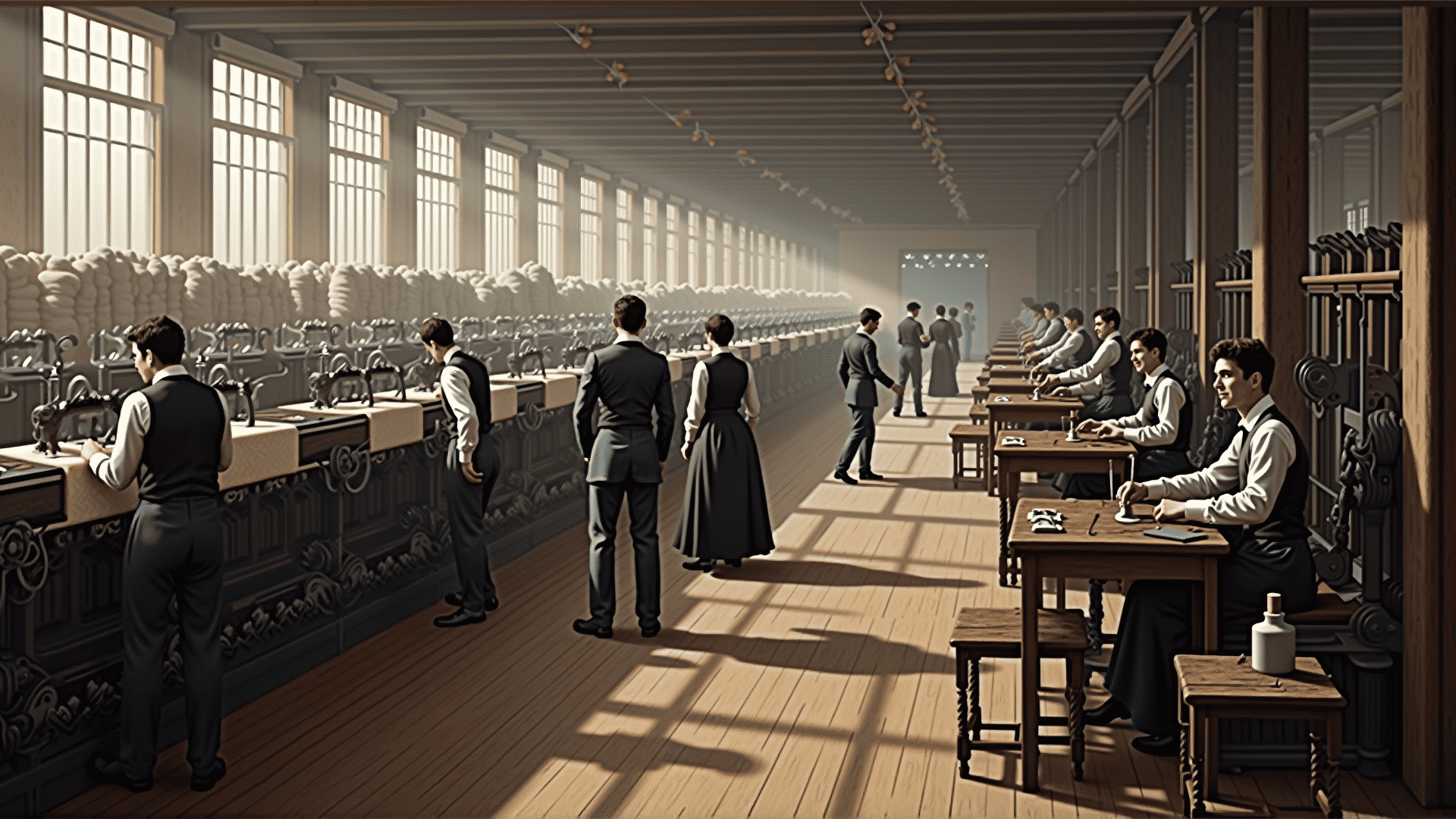The onset of the Industrial Revolution in the United States marked a significant transformation in the world of clothing, shaping both production and design in remarkable ways. This period, stretching from the late 18th to the mid-19th century, introduced revolutionary technological advancements that forever altered the textiles industry.
Prior to the Industrial Revolution, clothing was primarily handmade, with spinning wheels and manual looms used to produce fabric. The process was labor-intensive, time-consuming, and costly. However, the innovation of steam-powered machinery changed everything. The introduction of power looms and spinning machines allowed for cloth to be produced more quickly and efficiently than ever before. This mechanization significantly reduced the time required to weave textiles and broadened access to a variety of fabrics.
Moreover, the rise of machinery aided in standardizing construction techniques. Seamstresses worked faster with the help of sewing machines, which permitted larger volumes of clothing to be made with greater uniformity and precision. This shift dramatically scaled up production and offered opportunities to experiment with new garment styles and designs.
Another fundamental change was the introduction of print technology, such as cylindrical printers, which allowed for intricate patterns and colors on fabric. These innovations made elaborate prints more accessible to the general populace, as opposed to being exclusive to the affluent. Consequently, fashion diversified, with a wider array of textiles and possibilities for personal expression becoming available to various social classes.
The distribution networks for clothing also saw significant developments. Improved transportation infrastructure, particularly railroads, enabled the rapid movement of textiles and garments from manufacturing centers to broader markets. This logistics evolution contributed to the wider availability of different fabrics and articles of clothing across the country, further democratizing fashion.
In terms of design, the Industrial Revolution spurred urbanization, influencing the way people dressed. With new manufacturing jobs in burgeoning cities, more practical and durable clothing became necessary for the workforce, while middle and upper classes began to experiment with more elaborate styles reflective of their newfound economic prosperity.
In essence, the Industrial Revolution did more than just industrialize clothing production—it democratized fashion consumption and pushed the boundaries of design creativity. People now had access to a greater variety of fabrics and styles than ever before, allowing them to express individuality and social identity through their attire. This period laid the groundwork for the modern fashion ecosystem, with its blend of ever-evolving technology, design innovation, and cultural shifts.
